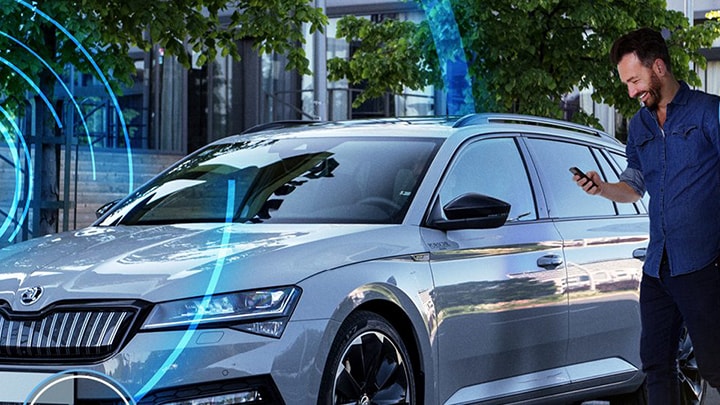For decades, when car enthusiasts talked about automotive performance, the
conversation mostly centered on raw speed. With each car generation, there
were incremental improvements in how quickly a car could go from 0 to 60, or
how long it took to complete a quarter mile. Today, those conversations are
changing. The electronics that support the car and enhance the driving
experience, have expanded the definition of performance. It’s not
just about how fast a given car model is, but how much smarter, safer and
more capable it is compared to its peers.
Similarly, with previous Wi-Fi standards, speed has been the predominant and
driving improvement for each technology generation. While the latest Wi-Fi 6
standard does offer considerable raw performance improvement, automotive OEMs
are quickly adopting Wi-Fi 6 for the many other enhancements it brings to
market. These enhancements are essential to deliver a seamless wireless
experience for the growing number of use cases both in and outside of the
vehicle.
Growing Wi-Fi Use Cases
Wi-Fi is a core technology that consumers use to interact and connect with
their car today. It is used for streaming music and videos, providing in-car
hot-spots for devices, projecting your cell phone display to your in-dash
panel and downloading over-the-air updates to your infotainment system. Car
OEMs are looking to greatly expand these use models in the future to support a
growing number of innovative use-cases, including:
-
Streaming and recording of multiple cameras feeds inside and outside of the
car to promote driver safety
-
Uploading of autonomous sensor and camera data so that OEMs can improve
their driver assist capabilities
-
Uploading of service and diagnostics data so your mechanic knows what is
wrong with your car even before you schedule your service appointment
Even before a car is delivered to the consumer, OEMS are looking to use Wi-Fi
for programming of vehicles on the production line or updating car firmware as
the car sits in the dealers’ parking lot. Wi-Fi technology can even be
used to address the requirements to detect children that are accidently
forgotten and left alone in a car on a hot day.
With these growing use cases, everyone, from drivers and passengers to the
vehicles themselves, is using more data and this demand will only increase.
Infotainment files are getting bigger with support for high-resolution video
and more people are downloading data to their devices while on the road. The
sensors used for autonomous driving generate a significant amount of data
projected at upwards to 4TB per day and this data needs to be uploaded for
processing and analysis. Firmware updates are also growing in size, with
manufacturers downloading larger software images to vehicles in order to keep
them updated with the latest security, safety and operating algorithms.
Automotive OEMs need more ways to meet this growing demand for data and Wi-Fi
6 will play an important role in that effort.
Won’t 5G Fill the Need?
Wi-Fi 6 is coming online around the same time as 5G cellular and as such they
have been designed to work together and provide very complementary roles in
automotive connectivity. For many of the connectivity needs, Wi-Fi offers
several key benefits. First, there is an ongoing cost associated with using
5G, since it operates in licensed bands governed by mobile providers who
deliver services based on individual and corporate contracts. Second, 5G
coverage is likely to be limited in the near term, since the infrastructure is
expensive to deploy and mobile operators are being selective about upgrades.
Third, Wi-Fi has historically offloaded over 50% of the total mobile traffic
from cellular networks in order to improve performance due to saturation or
low-coverage. This number is projected to grow close to 60% by 2022 with 5G
operators integrating Wi-Fi 6 as part of their deployment plans.
Six Benefits for Wi-Fi 6 in the Car
NXP and industry leaders, including the IEEE’s 802.11ax working group,
have equipped Wi-Fi 6 with a number of important upgrades and added
capabilities. Here are six prominent reasons why OEMs are adopting Wi-Fi 6 in
their current platform developments.
1. Less Congestion
Use of Wi-Fi has grown dramatically in recent years as it is included in many
more vehicles (the majority of cars are projected to include at least one
Wi-Fi device by 2022). This has resulted in increased congestion and
interference both inside and outside of the car. This congestion will impact
wireless performance on the roads, in traffic jams, in parking garages and
even dealer lots.
Wi-Fi 6 increases the total bandwidth available with two features to mitigate
congestion, resulting in more than four times the bandwidth and more overall
bandwidth per user. OFDMA (orthogonal frequency-division multiple access)
makes it possible for multiple users, with varying bandwidth needs, to access
the channel simultaneously. BSS (basic service set) coloring lets Wi-Fi 6
identify signals on the same channel that are coming from different radios. A
device can then recognize and ignore extraneous traffic resulting with an
increase in total available bandwidth.
2. Longer Range
When cars are parked in a garage at home, in a dealer lot or parking
structure, they are often far away from the nearest access point. This can
make it difficult to use Wi-Fi features such as over-the-air firmware updates
or uploading of vehicle data.
Wi-Fi 6 adds several core technologies to greatly improve range. Today, due to
its longer wavelengths, the 2.4 GHz band is typically used to maximize
communication distance. Wi-Fi 6 further extends this range with the addition
of a special range-extension mode. Wi-Fi 6 also adds support for up-to 8
antennas in an access point where 8×8 sounding feedback can achieve the
fullest download performance at longer range.
3. Lower Power
Accessing the Wi-Fi network while the car is off uses precious battery power
and will reduce the time your car can sit between use. This limits the
usefulness of Wi-Fi while your car is parked. OEMs use a variety of techniques
to power-down systems to achieve very low current draw when the car is not
being used and Wi-Fi 6 makes that job easier. Wi-Fi 6 uses a power-efficient
scheduling mechanism called target wake time (TWT) to let the access point
schedule the wake time for each client. The car can go to sleep for a set
amount of time and then wake up as needed for Wi-Fi connectivity. On dealer
lots, for example, cars can receive necessary updates and still be ready to
start and operate normally, even after sitting for an extended period.
 4. Faster
4. Faster
Along with the enhanced capabilities already described, Wi-Fi 6 does, indeed,
deliver higher performance in terms of data rates. The peak data rates for a
single client device are up to 40 percent higher even in a highly congested
environment. Several enhancements and additions to the basic protocol,
including OFDM, MU-MIMO and 1024-QAM (quadrature amplitude modulation) are
leveraged to increase throughput.
5. Upload Performance
The amount of data generated in-vehicle is growing exponentially as cars
become smarter and autonomous driving modes are introduced. Further, more and
more cameras are being added to the car to monitor passengers or driver in
ride-share and other programs. In the near future, offloading of this data
will demand upload performance on-par with download speeds. Complimenting
download multi-user MIMO (MU-MIMO) introduced in Wi-Fi 5, Wi-Fi 6 extends
MU-MIMO capabilities to the upload direction. This will greatly improve the
upload data rates by up-to 80% for networks with multiple users.
6. Consumer Satisfaction
The consumer experience isn’t, strictly speaking, a feature of Wi-Fi 6,
but the presence of Wi-Fi 6 in new vehicle models will help improve the
driving experience and meet consumer demand for technology. Wi-Fi 6 is already
gaining traction in consumer devices, including smartphones and access points
and will soon be a familiar part of IoT and smart home devices, too. Consumers
will want their vehicles to be part of this trend and will have growing
expectations for seamless, reliable connectivity, based on Wi-Fi 6, as the
technology becomes more prevalent.
Don’t Be Late
The time to start designing with Wi-Fi 6 is now. It typically takes two to
three years for a technology that’s standard on a smartphone to appear
in vehicles. Consumers expect their cars to keep pace with these trends,
especially when a superior experience, performance and quality can be
delivered. For this reason, numerous OEMs have already included Wi-Fi 6 into
their development plans for next generation vehicles.
The NXP Advantage
NXP is an early innovator with Wi-Fi 6 and already offers a portfolio that is
purpose-built for use in vehicles. Our products are AEC-Q100 certified, so
automotive OEMs can be confident that our solutions will meet the challenging
quality and performance demands of carts, trucks and motorcycles.
Connect to Wi-Fi 6
Wi-Fi 6 as a pivotal technology for the future of automotive and we’re
excited about the promise it holds for innovation, operational efficiency and
the driving experience. To learn more about our portfolio and how we’re
addressing the specific needs of Wi-Fi in automotive, visit us at
NXP Wi-Fi 6


 4. Faster
4. Faster


